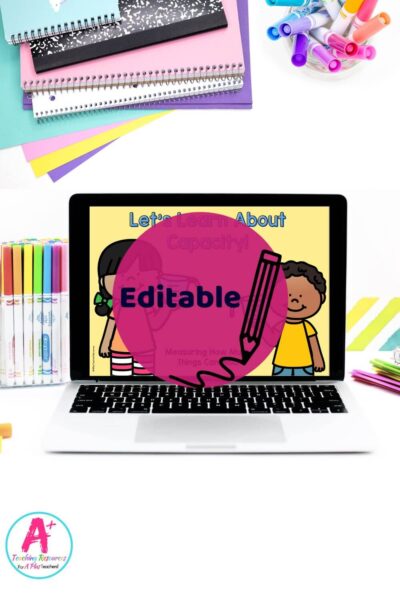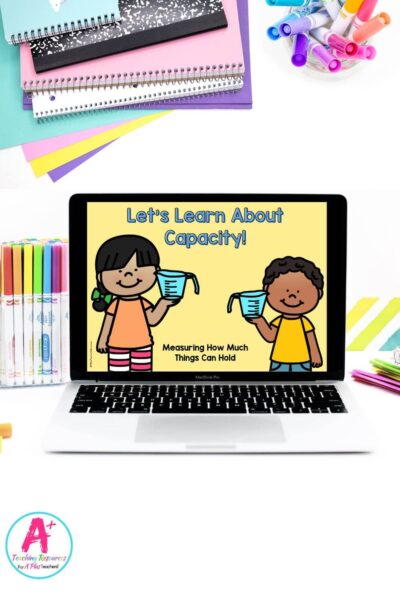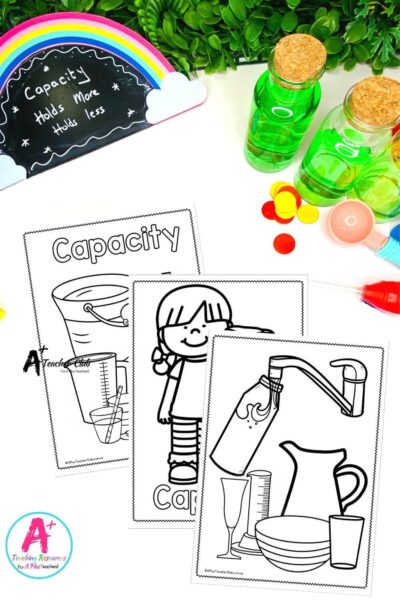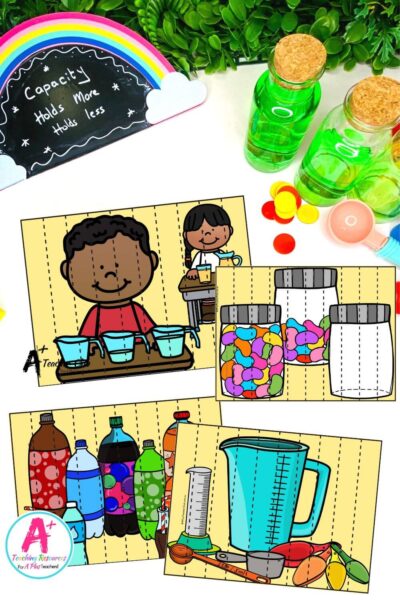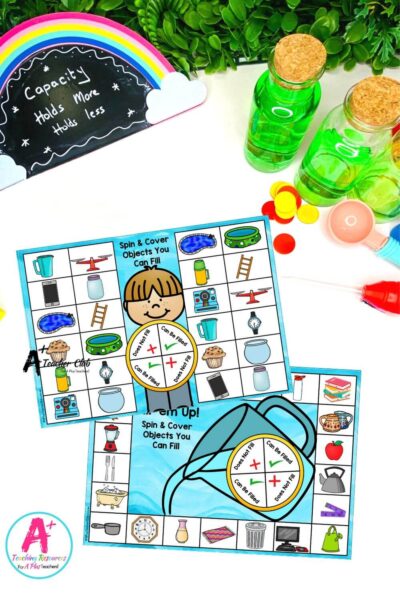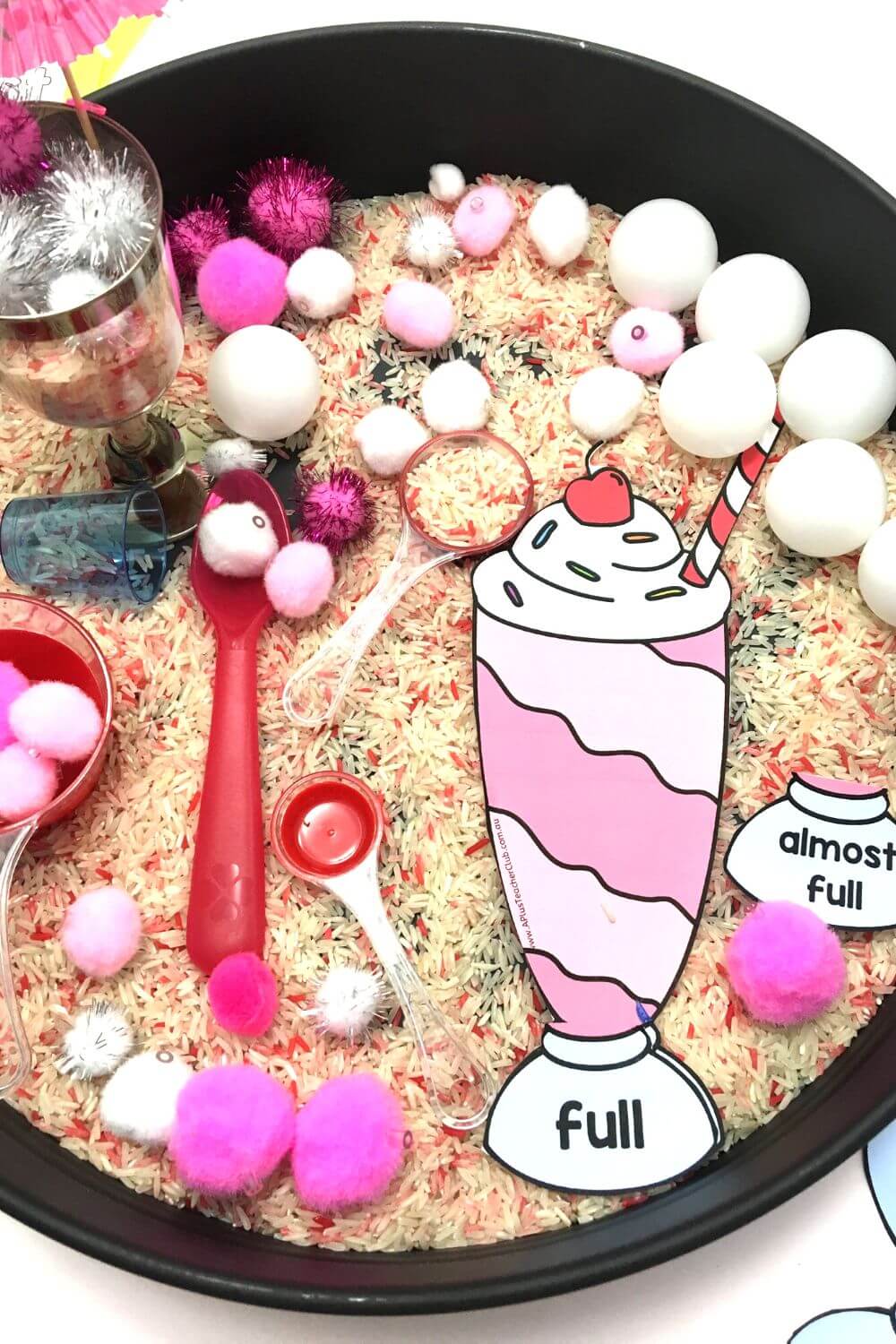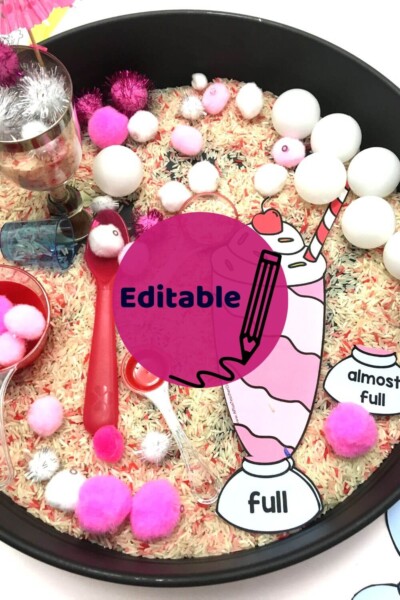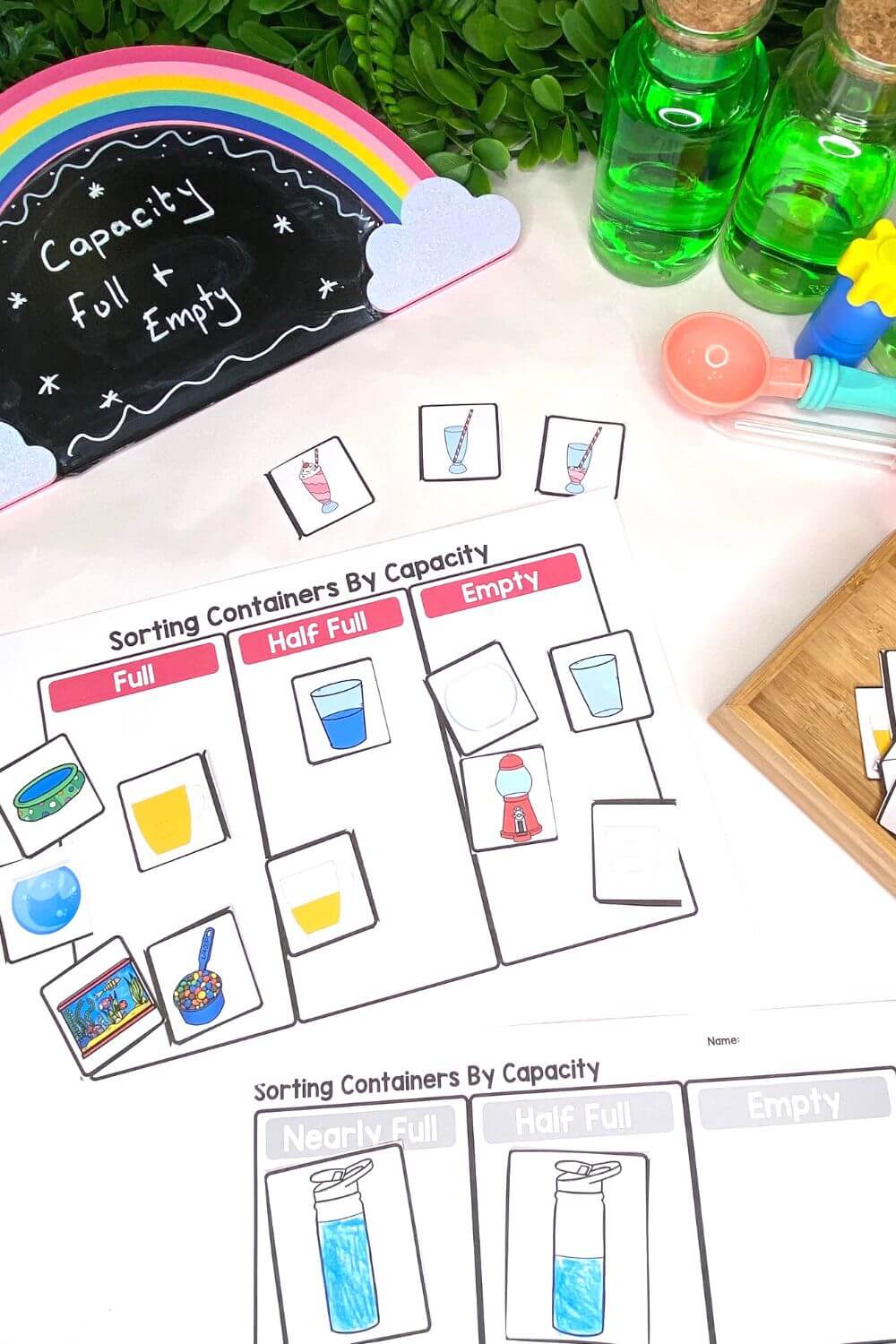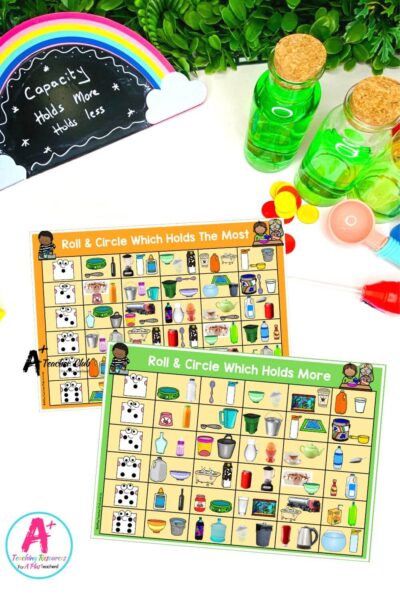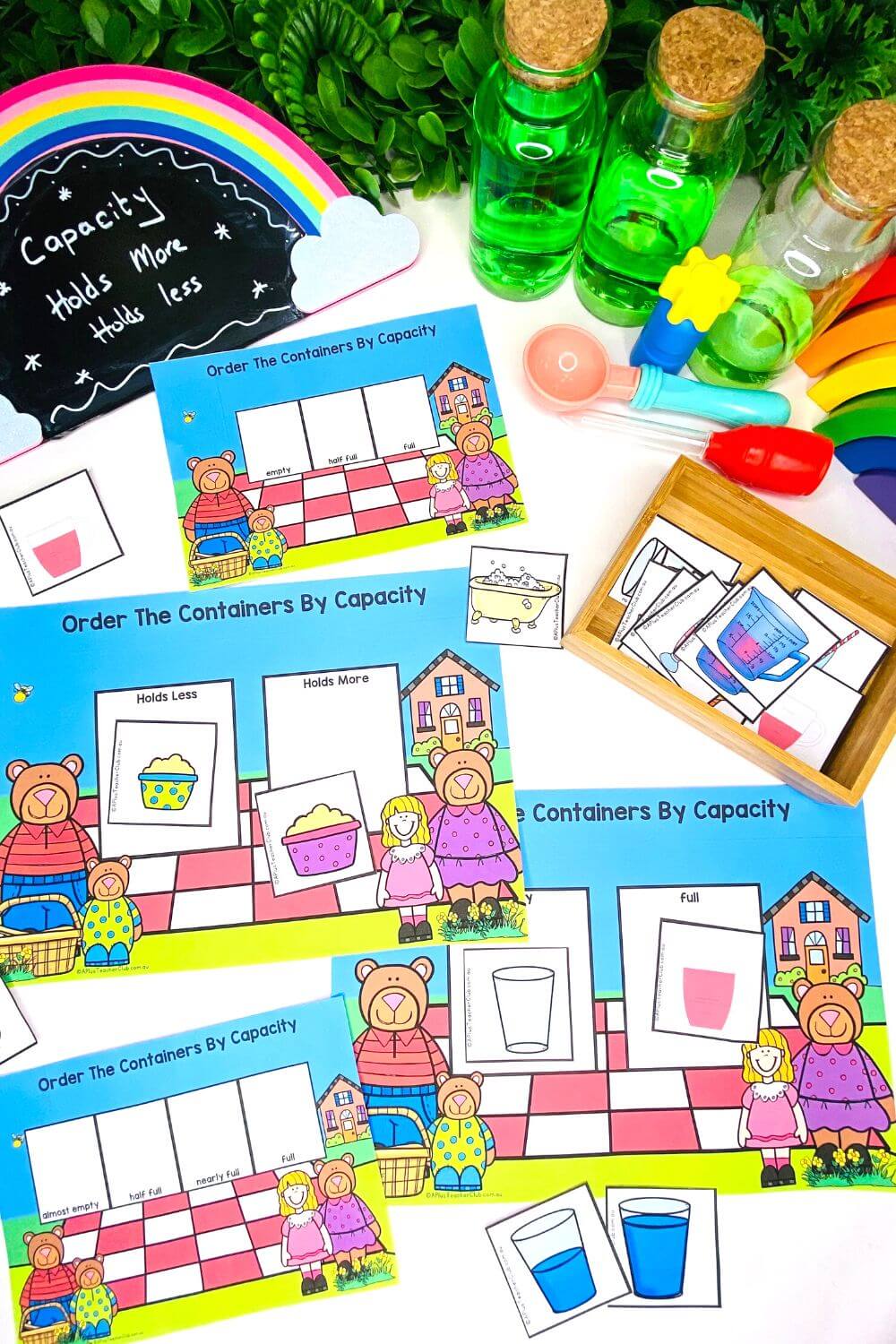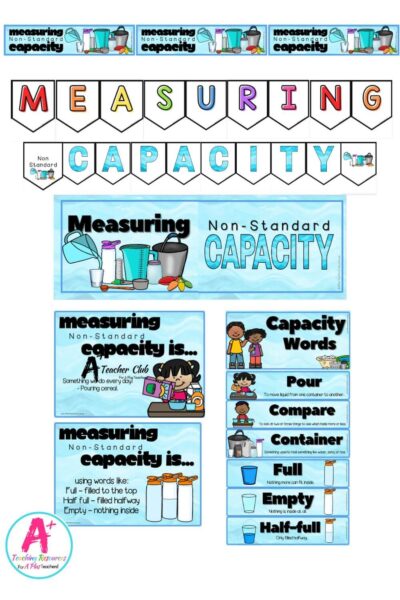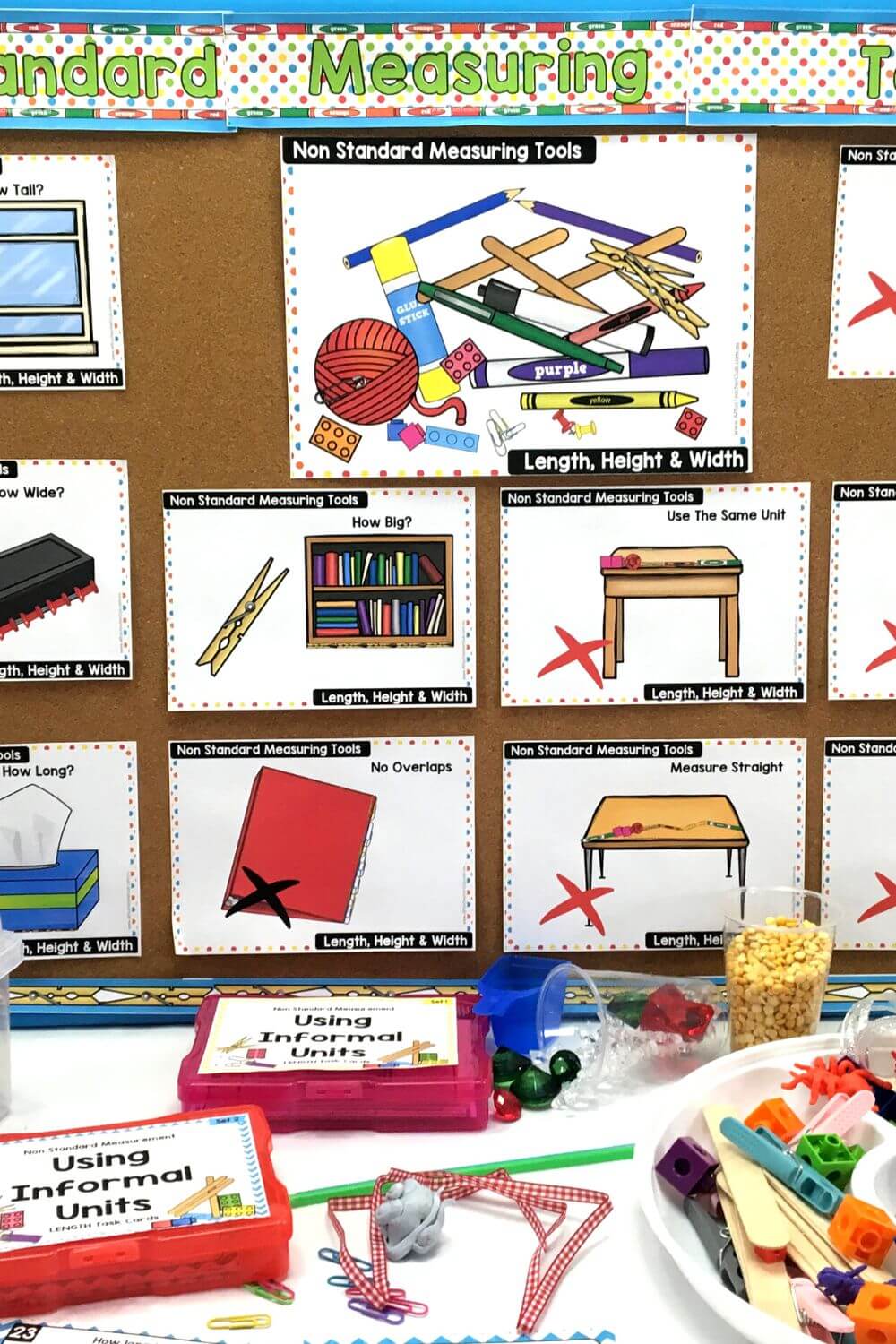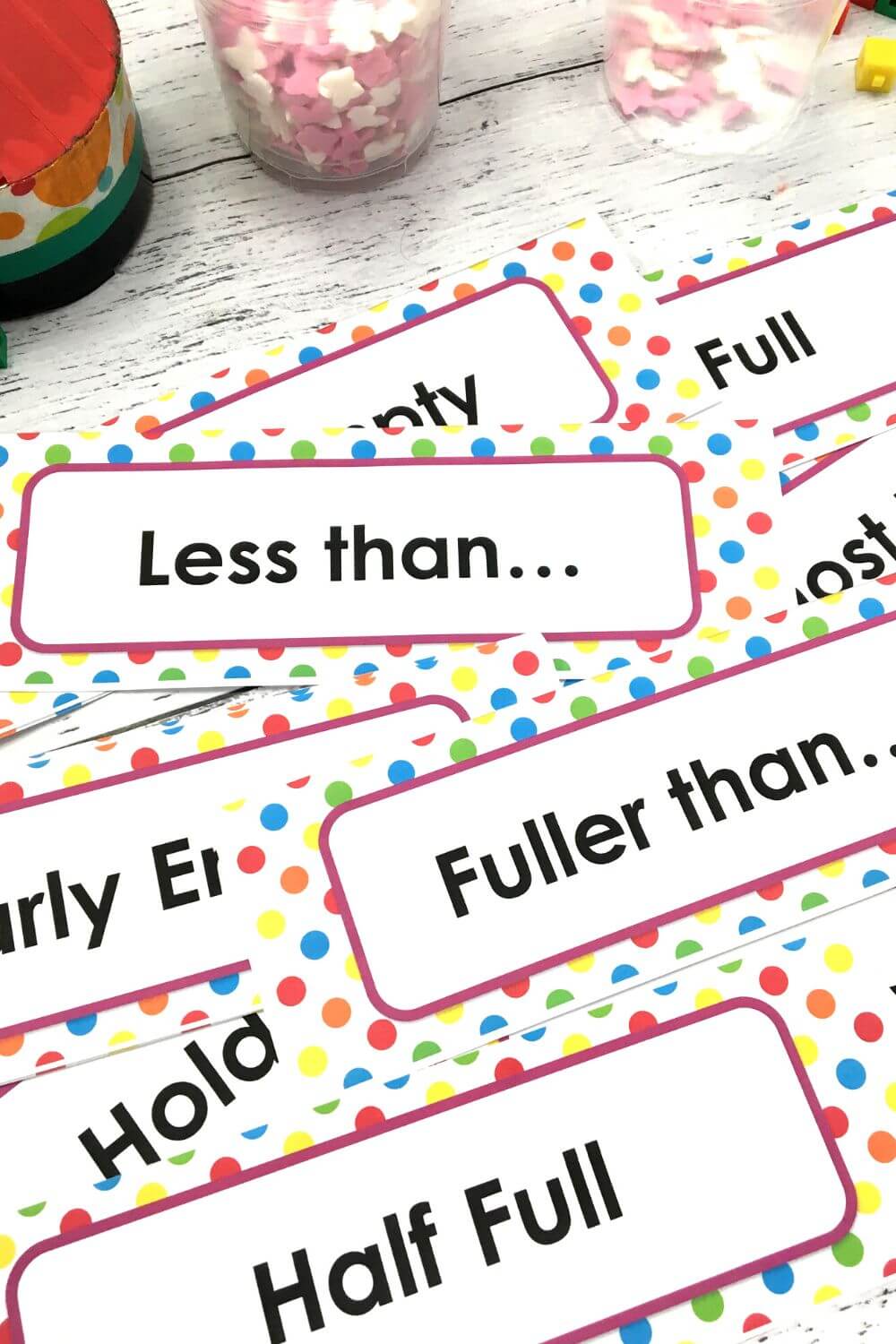Capacity Activities For Kindergarten & Preprimary
Units Of Measurement
Explore Early measurement concepts with these fun Capacity Activities For Kindergarten for kids. Fun hands-on non standard measuring games to inspire you and your kids!
Before kids are introduced Standard Measurement using rulers and measuring tapes they need to understand what measuring is all about. To build deep understanding of the measurement process and the skills needed to measure accurately kids need to practice measuring using informal non standard units like popsticks, paper clips and blocks.
So what is nonstandard measurement?
Non standard measurement is using an informal unit to measure objects. It’s used by students in Foundation Stage, Kindergarten, Nursery, Reception and Year 1. The purpose of non-standard measurement is to focus the child on key measuring skills rather than reading tricky scaled instruments. Non Standard measurement helps kids learn to:
- select the right tool to measure the object being measured
- select the same unit and not different units when measuring an object
- measure without gaps or overlaps
- start and end the measuring in the right spots
- measure it straight
- be precise
Teaching Capacity in Kindergarten And Preprimary
Teaching measurement in Kindergarten, Prep, Foundation & EYFS is about building a deep understanding of the measurement process and developing the range of skills needed to measure accurately.
For teaching capacity, this means allowing kids to explore capacity, or how much a container holds, by pouring from one container to another.
Children need the opportunity to investigate:
- filling to the top so no more can fit
- what happens when you put in too much
- emptying containers so there’s nothing inside
- using informal non-standard units to measure ‘how much’ fits inside a container like detergent scoops, plastic containers, jars etc…
And what better place to do this than in the water trough!
Using a water trough is a really important part of teaching Kindergarten and Preprimary students about capacity, as capacity is all about how much liquid a container can hold. But if water play is off the agenda then please select “pouring substances” like sand, salt, grains, or items that don’t create gaps when inside a container, like blocks and bears; save them for measuring length.
Just to recap, non-standard measurement is using an informal unit to find out “how much” of something there is with the focus on key measuring skills rather than reading tricky scaled instruments.
Non-standard measurement skills included learning to:
- select the right tool to measure the object being measured
- select the same unit and not different units when measuring an object
- measure without gaps or overlaps
- start and end the measuring in the right spots
- measure it straight
- be precise
These are universal skills that apply to all measurement concepts. In the context of teaching capacity to Kindergarten and Prep Students teaching programs should focus on:
- using everyday language to compare 2-3 objects:
- full, empty, nearly full, almost full, almost empty, nearly empty, half full, half empty, not full, not empty
- Holds more, holds less
- Holds more than, less than, holds the same as
- Using direct comparison to compare objects. This involves filling a container and pouring the content into another container to see if it fills it completely, checking if there is anything left in the first container or if there is an overflow.
- Using indirect comparison of two containers – using a non-standard unit to fill an object e.g. use a detergent scoop, plastic jar, or a spoon to fill a bucket counting how many “scoops” were needed
- Estimating – encourage students to estimate their answer before completing the task, then review their guess, discussing how to make a good estimation
Below you will find a library of hands-on, playbased activities created for Kindergarten and Preprimary students measuring length using non-standard units.
Resources listed in this collection
Click to jump to...-
Non Standard Capacity PowerPoint (Editable)
-
Non Standard Capacity PowerPoint
-
Non Standard Capacity Student Workbook
-
Non Standard Capacity Colouring Pages
-
Non Standard Capacity Strip Puzzles
-
Non Standard Capacity - Spinner Games - 'Fill 'Em Up!'
-
Non Standard Capacity Dice Games – Compare Full & Empty - Milkshakes
-
Non Standard Capacity Milk Shake Theme
-
Non Standard Capacity Milk Shake Theme Editable
-
Non Standard Capacity Dice Games – Compare Full & Empty – Jellybean Jars
-
Non Standard Capacity Jelly Bean Theme
-
Non Standard Capacity Drink Bottle Theme
-
Non Standard Capacity Sorting Mats
-
Non Standard Capacity Board Game (Updated 2025)
-
Non Standard Capacity Dice Games - Compare Everyday Objects
-
Non Standard Capacity Fairytale Theme
-
Non Standard Capacity Display Pack
-
Non-Standard Units Display
-
Non Standard Capacity Words
What is Capacity?
Full & Empty
Compare Capacity
Non-Standard Display Packs
Explore tags
More Non-Standard Measurement Resources
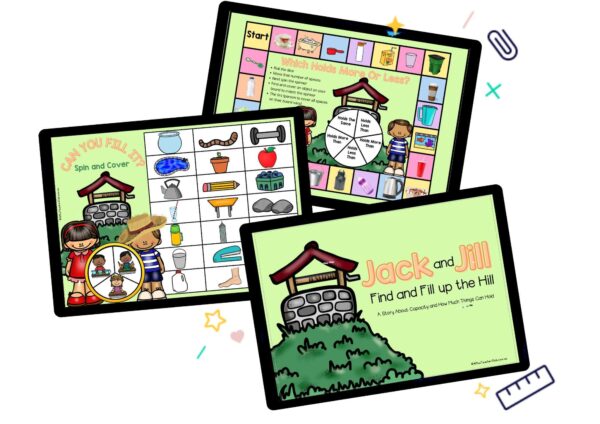
Non Standard Capacity - Jack & Jill
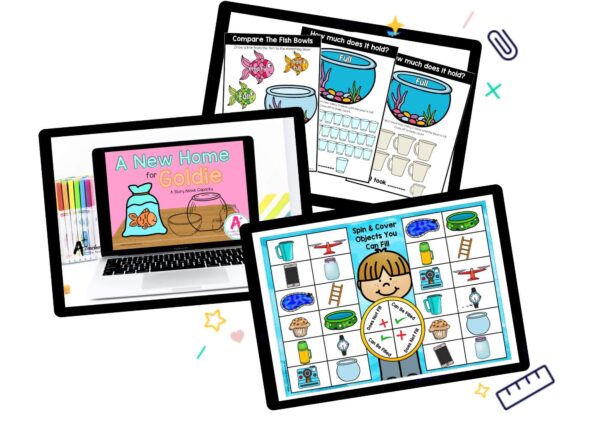
Capacity - K - PP
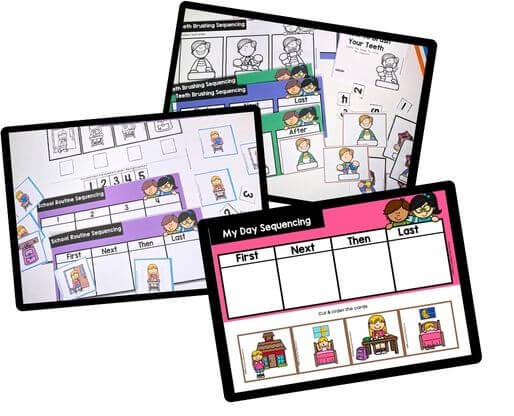
Time - 4 Step Sequencing
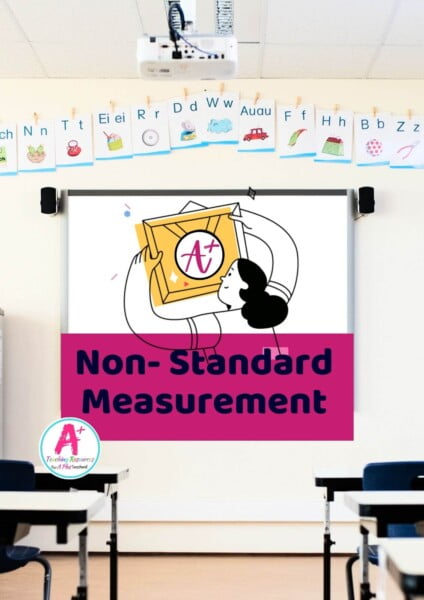
Year 1 Non-Standard Measurement

Time - Days of the Week
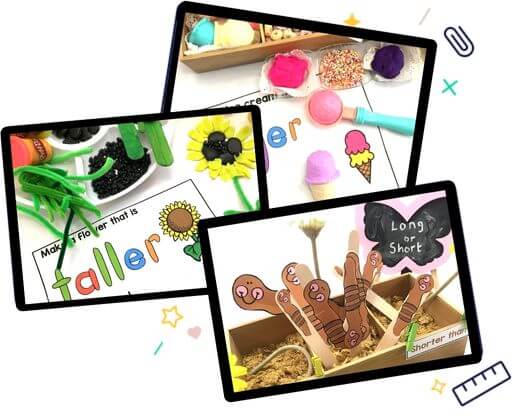
Length - Non-Standard
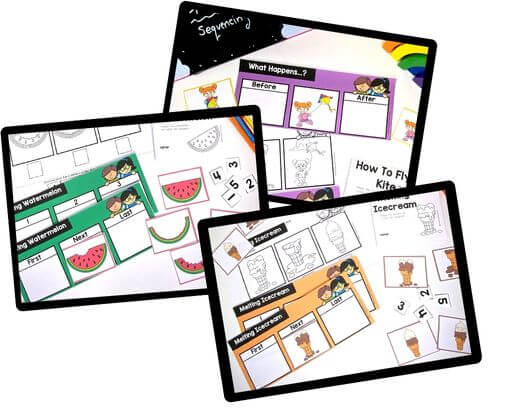
Time - 3 Step Sequencing

Area - Non-Standard
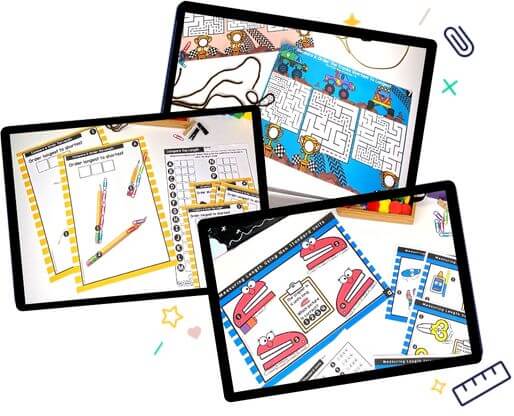
Length - Year 1

Mass - Non-Standard

Vocabulary - Measurement
Can't find what you're looking for?
Send us a request! Use this form to request a resource. Please give details of the learning area, topic, year level, curriculum links. We’ll be happy to take a look to see if we can fit it in. Unfortunately a request does not guarantee we will be able to make it!
"*" indicates required fields

